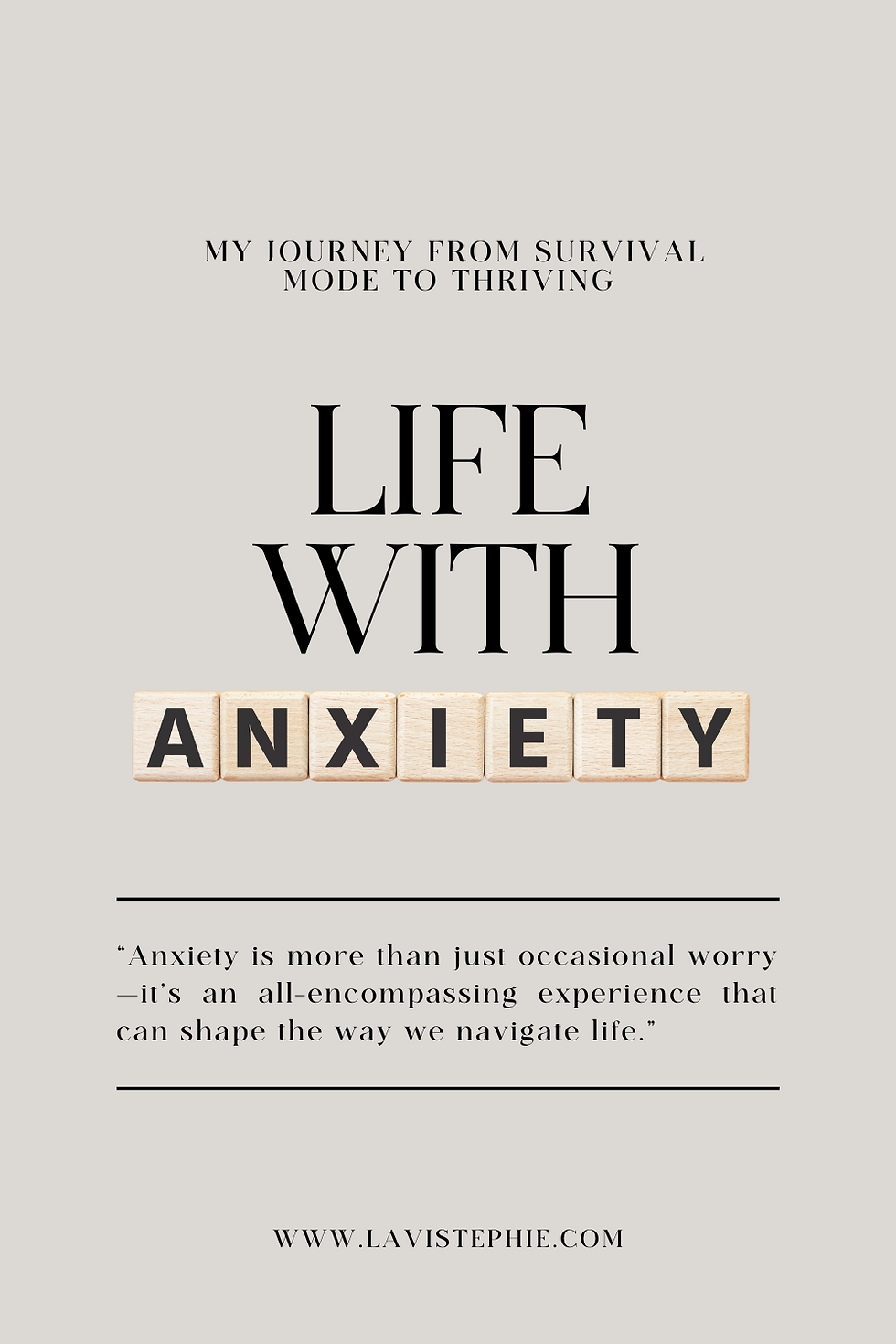Life with Anxiety: My Journey from Survival Mode to Thriving
- Stephie C.
- Mar 19
- 2 min read
Updated: Mar 27
Anxiety is more than just occasional worry—it’s an all-encompassing experience that can shape the way we navigate life. For many, it starts early, woven into the expectations and responsibilities placed upon us. For me, growing up as an immigrant child, anxiety wasn’t something I had a name for—it was just life, practically woven into my DNA.
From an early age, I was the family translator, the document reviewer, and the student who had no option but to excel. Adjusting to a new country, language, and culture while keeping up with school caused me to stress. I adapted, but the underlying anxiety never really faded.

Recognizing the Signs of Anxiety
Things like moving, family dynamics, and test taking always caused me worry. But I never realized just how excessive my worrying was. Back then, I could also confidently speak on the school news that aired in front of every classroom, represent my peers in meetings with the principal, and even tackle city-wide quiz bowls without breaking a sweat. So the things I would excessively worry about, I brushed them off as nerves. Until one day, I couldn’t.
When Anxiety Took Over
A major family crisis sent my anxiety into overdrive. The occasional stress and nervousness turned into back-to-back anxiety attacks. My body responded as if it were in constant danger—chest tight, muscles tense, and a racing heart that wouldn’t slow down. It became clear that this was more than just stress.
After experiencing months of heightened symptoms, I finally sought medical advice. My primary care physician mentioned Generalized Anxiety Disorder (GAD), and my therapist later confirmed the diagnosis. The diagnosis didn’t change my anxiety overnight, but it gave me clarity.
Learning to Manage Anxiety
Therapy helped tremendously. It didn’t erase my anxiety (if only), but it helped me focus on what I can control. Small things—vitamins, checking in with myself, setting boundaries, and resting before burnout hit. Pouring into myself more often so life didn’t knock me completely off balance.

With these changes, my anxiety attacks have become less frequent. The work is ongoing, but I no longer feel the physical symptoms of anxiety—the rapid heartbeat, the shortness of breath, the stomach tension—for every little thing, especially when I logically know there is no real danger. It no longer controls my entire life.
Through It All, I Stay Hopeful
Managing life with anxiety is an ongoing process. Some days, my symptoms are quiet. Other days, they demand my full attention. The difference now is that I have the tools to cope.
For anyone who struggles with anxiety, know that your experiences are valid, and your progress—no matter how small—is worth recognizing. Living with anxiety isn’t easy, but with the right support and coping strategies, it becomes something you can navigate with resilience and self-compassion. Sending virtual hugs!










Comments